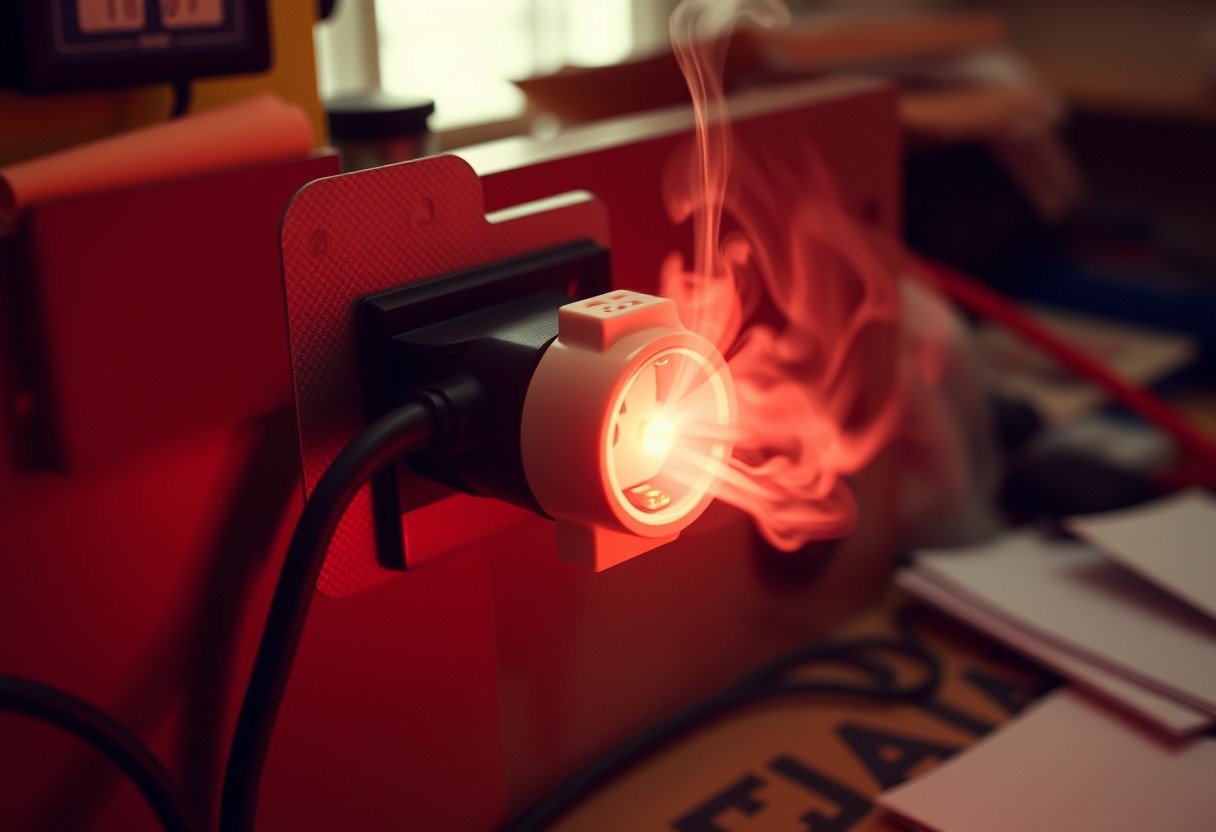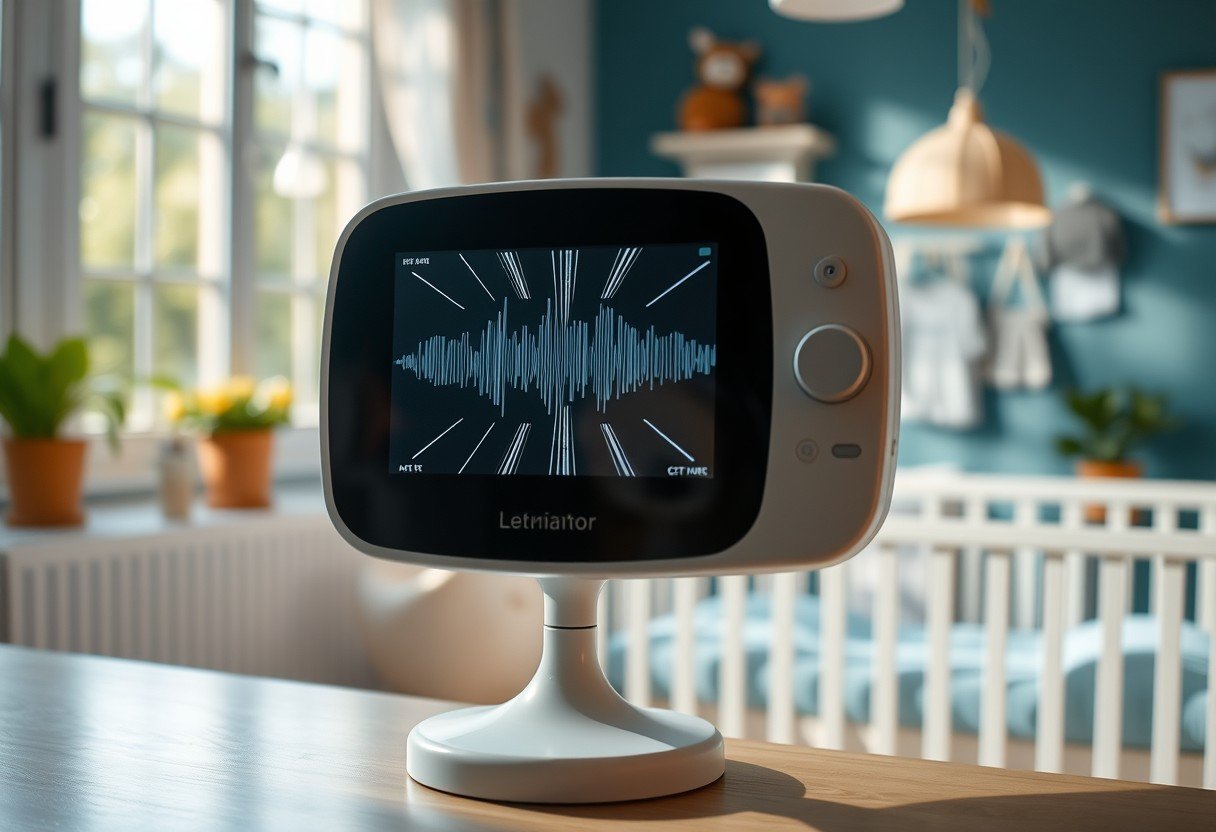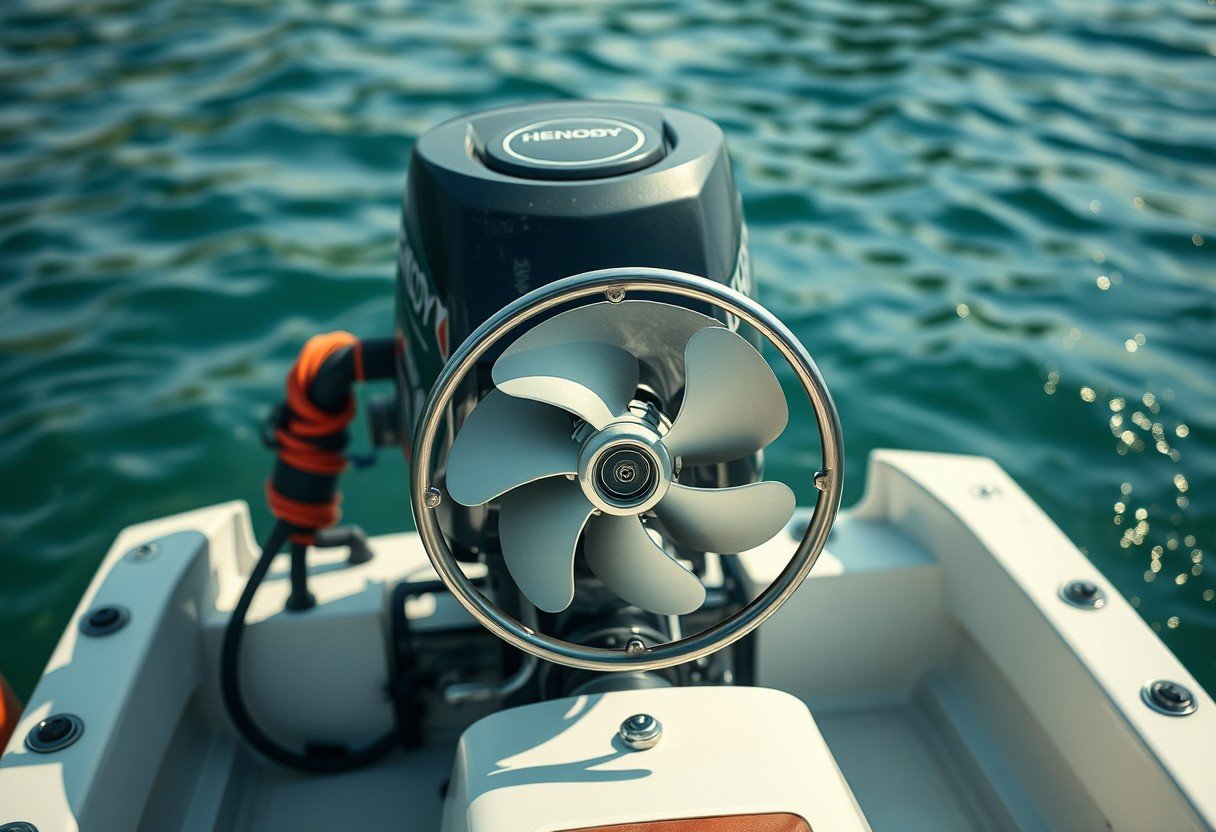Noticing your extension cord is hot to the touch is an important warning sign you should never ignore. This overheating happens when the cord is forced to handle more electrical current than it was designed for, or when it’s damaged. This can lead to serious risks, including electrical fires and damage to your valuable appliances. Understanding the causes is the first step toward preventing these hazards and ensuring you use extension cords safely in your home.
What Causes an Extension Cord to Overheat?
The most common reason for an extension cord getting hot is simply asking it to do too much work. This is known as overloading, and it happens when you plug in appliances that draw more electricity, or amps, than the cord is built to handle.
Think of the cord as a pipe for electricity. If you try to force too much water through a small pipe, the pressure builds up. Similarly, forcing too much electrical current through a thin wire generates friction and heat. Every extension cord has a specific capacity, and exceeding it is a direct path to overheating.
Another critical factor is the cord’s physical condition. Over time, cords can become frayed, cracked, or damaged from being pinched by furniture or doors. This damage can expose the internal wires or create points of high resistance, causing heat to build up in one specific spot. Even loose connections at the plug or outlet can create resistance and generate dangerous levels of heat.
Here are the primary culprits behind a hot extension cord:
- Overloading: Plugging in devices that collectively exceed the cord’s amp or watt rating.
- Incorrect Gauge: Using a cord with wires that are too thin (a higher gauge number) for the amount of power needed.
- Excessive Length: Using a cord that is longer than necessary, as longer cords have higher electrical resistance.
- Physical Damage: Frayed insulation, kinks, or broken wires that impede the flow of electricity.
How to Choose the Right Extension Cord for the Job
Not all extension cords are created equal. They are specifically designed for different tasks, and using the wrong one is a common mistake that leads to overheating. Cords are categorized for indoor or outdoor use, with outdoor cords having tougher insulation to withstand moisture and sunlight.
The most important specifications to check are the wire gauge and the power rating. The gauge tells you the thickness of the wire inside the cord. It’s a bit counterintuitive, but a lower gauge number means a thicker wire that can handle more current safely. For high-power items like space heaters or power tools, you need a heavy-duty cord with a low gauge, such as 14 or 12.
Before you buy, always check the power requirements of the appliance you intend to use. This is usually listed in watts or amps on the device’s label. Then, choose an extension cord with a rating that exceeds that requirement.
Extension Cord Gauge and Capacity Guide
| Wire Gauge | Amperage Rating | Common Uses |
| 16-Gauge | 10 Amps | Lamps, clocks, light-duty holiday lights |
| 14-Gauge | 15 Amps | Power tools, vacuum cleaners, heaters |
| 12-Gauge | 20 Amps | Chain saws, circular saws, major appliances |
The Hidden Dangers of a Hot Extension Cord
A hot extension cord is more than just a minor issue; it’s a serious safety hazard. The most significant danger is the risk of an electrical fire. The heat generated by an overloaded or damaged cord can easily melt the plastic insulation, exposing the live wires.
Once the wires are exposed, they can create a short circuit or sparks that can ignite nearby flammable materials like carpets, curtains, or furniture. According to the U.S. Consumer Product Safety Commission, extension cords are responsible for thousands of house fires each year.
Beyond the fire risk, an overheating cord can also cause permanent damage to your expensive electronics. The inconsistent power delivery and voltage drops from a struggling cord can stress the sensitive components inside computers, TVs, and other devices, leading to malfunctions or shortening their lifespan. Protecting your property and your devices starts with respecting the limits of your extension cords.
Simple Steps for Safe Extension Cord Use
Following a few basic safety guidelines can drastically reduce the risk of your extension cord overheating. The most crucial rule is to never use an extension cord as a permanent wiring solution. They are designed for temporary use only.
Never plug multiple high-power appliances into a single cord. For devices like refrigerators, microwaves, or space heaters, it is always safest to plug them directly into a wall outlet. If you must use a cord, ensure it is a heavy-duty one rated for the appliance’s power draw.
Proper placement is also key to safety.
- Avoid running extension cords under rugs or carpets, as this traps heat and can be a fire hazard.
- Do not coil or bunch up a cord while it is in use, as this also prevents heat from dissipating.
- Keep cords out of high-traffic areas to prevent tripping and physical damage to the cord.
Finally, never “daisy-chain,” which means plugging one extension cord into another. This dangerous practice dramatically increases resistance and can overload the wall outlet, creating a severe fire risk.
Regular Checks and Maintenance to Prevent Hazards
Maintaining your extension cords is simple and is one of the most effective ways to prevent accidents. Before you use any extension cord, give it a quick visual inspection. Taking just a few seconds to do this can help you spot a problem before it becomes a disaster.
Look for any signs of wear and tear. Check for cracks or fraying in the insulation, and inspect the plug for scorch marks or bent prongs. If the plug feels loose when you connect it to an outlet or another device, it’s a sign that the connections are worn out and the cord should be replaced.
When you’re not using your cords, store them properly. Store cords indoors in a cool, dry place, and coil them loosely to avoid creating kinks or stress points. Avoid wrapping them tightly around objects, as this can damage the internal wires over time.
Knowing When It’s Time for a Replacement
Extension cords are not meant to last forever. If a cord shows any signs of damage or feels hot during normal operation, it must be retired immediately. Do not attempt to repair a damaged cord with electrical tape; this is not a safe or permanent solution.
A cord that feels warm or hot to the touch is actively telling you it’s failing or being misused. Other clear signs that a cord needs to be replaced include discoloration on the plug or cord, melted plastic insulation, or wires that are visible through the outer jacket.
When choosing a replacement, remember to select a cord that is appropriate for the intended task. Consider the length you need and the power requirements of your devices. Always look for a mark from a recognized testing laboratory, like UL (Underwriters Laboratories), to ensure it meets safety standards.
Frequently Asked Questions about Hot Extension Cords
Why does my extension cord get hot but the appliance works fine?
This happens because the appliance is drawing more electrical current than the cord is rated to handle. While the appliance may function, the cord’s thin wires are struggling, creating resistance and dangerous heat.
Is it normal for an extension cord to feel slightly warm?
A cord carrying a significant electrical load may feel slightly warm, but it should never be hot to the touch. If you can’t comfortably hold it in your hand, it’s overheating, and you should unplug it immediately.
Can I plug a space heater into an extension cord?
It is strongly recommended to plug space heaters directly into a wall outlet. If you absolutely must use an extension cord, use a short, heavy-duty cord with a low gauge (14 or 12-gauge) rated for at least 15 amps.
What does the gauge number on an extension cord mean?
The gauge indicates the thickness of the wire inside the cord. A lower number means a thicker wire that can safely carry more electricity without overheating.
How do I know what rating my extension cord needs?
Check the label on your appliance for its power requirements, listed in watts or amps. Your extension cord must have a rating equal to or greater than the appliance’s requirement to be used safely.








Leave a Comment